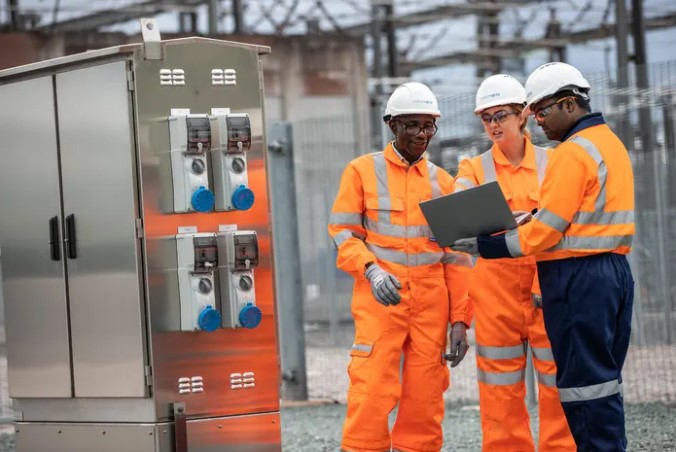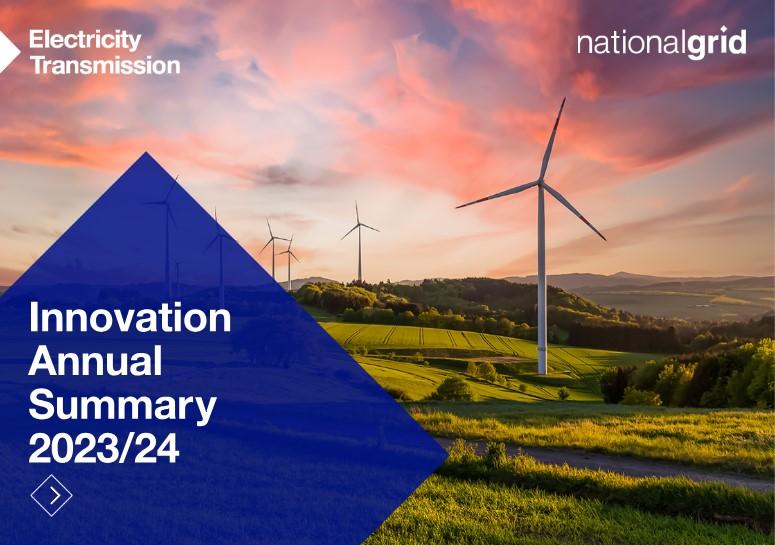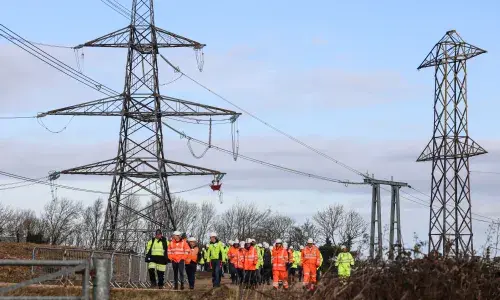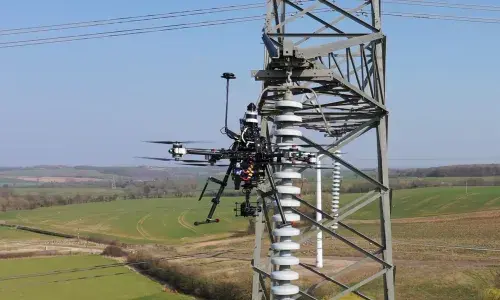
How we’re innovating at National Grid to boost the energy transition
We’ve just published our 2023/24 Innovation Annual Summary, which reports on our latest funded projects that are finding new ways to make a difference to the energy transition.
At National Grid Electricity Transmission (ET), we’re well aware of the vital role innovation can play in accelerating progress towards net zero. It’s reflected in everything from the technology in our major projects – see our innovative new T-pylons – to the way we work with our supply chain to deliver a decarbonised future network.
It’s also reflected in our growing portfolio of innovation projects. This year we added a further 27 projects to our Network Innovation Allowance (NIA) portfolio – taking our total portfolio to 67 – and we’re leading multiple Strategic Innovation Fund (SIF) initiatives following the latest funding round.
We also continue work on two exciting Network Innovation Competition (NIC) initiatives – our Deeside Centre for Innovation and RICA project – alongside innovative activity taking place in our business every day to help us manage our transmission network more effectively.
In our new annual summary, you’ll find examples of how our portfolio of innovation projects – and our collaborative work with partners – is applying fresh thinking to some of the greatest engineering challenges of our times.

See below for a spotlight on some of these innovation initiatives, and read our full annual summary for an in depth look at how we’re delivering a network that enables the transition to net zero.
Project spotlight
Our recent innovation work is delivering new ways of reducing the emission of greenhouse gases, creating tools to boost capacity on our existing network, and last year led to the world’s largest pour of cement-free concrete. Here are some other live projects that are set to benefit consumers and reduce our impact on the planet.
- Retrofit Insulated Cross Arms (RICA) – This innovation enables the retrofitting of insulated cross arms on towers in place of the standard metallic cross arms from which insulators and conductors are traditionally attached. It could allow overhead line upgrades from 275kV to 400kV, boosting capacity by over 40% and bringing associated cost benefits to consumers. Through our partnership with insulator manufacturer Shemar and overhead line contractor Wood, the project is progressing well, with a prototype put through its paces in the controlled environment of our Deeside Centre for Innovation.
- Automated alert tool to predict flood and erosion risk – Our Environmental Risk and Assurance (ERA) project is developing an automated weather alert tool to provide an ‘early warning system’ for flood risk to our infrastructure. It’s already rolled out into our Transmission Network Control Centre (TNCC) to give our engineers better visibility of risks around incoming severe weather. It can also provide long-term erosion forecasts for the next 30 years and beyond, arming our experts with essential insight to maintain and improve network resilience in the face of climate change.
- Reducing carbon emissions in construction – Reducing emissions from our electricity network also means finding more sustainable ways to build it – and this project is examining how we could reduce the carbon footprint of our construction activities by exploring alternative low carbon materials. Our innovation engineers have homed in on a set of potential solutions which will now be designed, tested and trialled in our substations, From graphene-enhanced concrete to lightweight foam and 3D printed structures, the innovations could substantially lower the environmental impact of our construction work.
- Insight into how V2G can help manage peak demand – While vehicle-to-grid (V2G) technology is in its infancy, together with smart charging of electric vehicles (EVs) it could significantly reduce peak demand on the grid by 2050, and potentially offset the additional load from charging. This project developed a model that investigates the impact of V2G on peak demand across Britain under different scenarios, using evidence from consumer behaviour. Uniquely, it modelled a real-world 40km2 area of Nottingham and scaled it up to represent the national system, examining the whole system benefits of V2G.
- Embracing ultra-high voltage solutions – As we look towards ultra-high voltage (UHV) technologies as a way to meet future demand growth and carry massive volumes of clean electricity in bulk, finding economically and technically viable solutions which minimise environmental impact will be imperative. This feasibility study sees our innovation engineers working with Scotland’s transmission owners, Arup, and experts at Manchester and Strathclyde universities to investigate compact UHV pylon designs and cable sections, and examine efficient ways to deliver UHV infrastructure in Britain.
Find out more about our innovation work in our latest annual summary, and get in touch with the team – we would love to hear your thoughts, ideas and disagreements, and welcome the opportunity to collaborate to tackle the energy challenges ahead.


